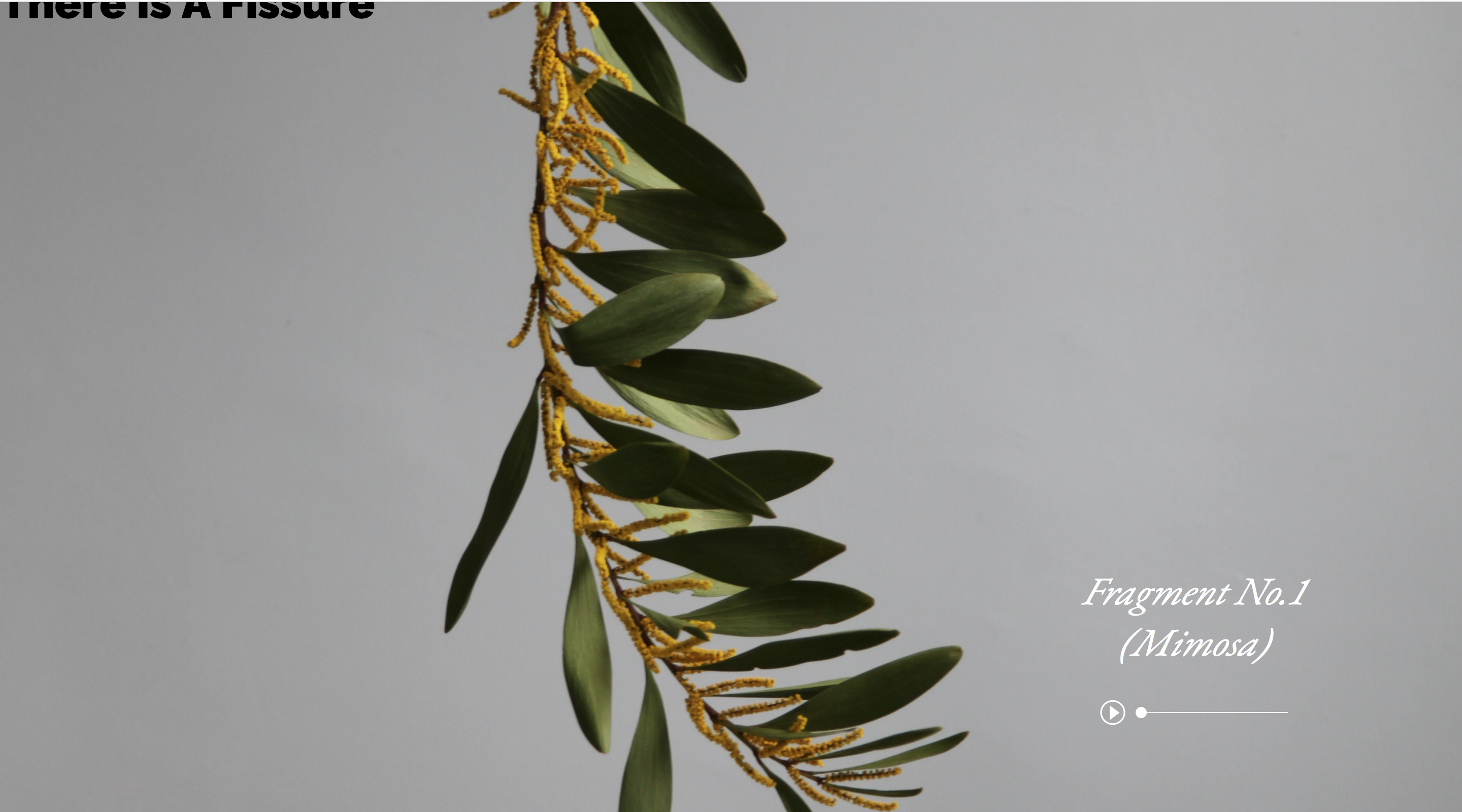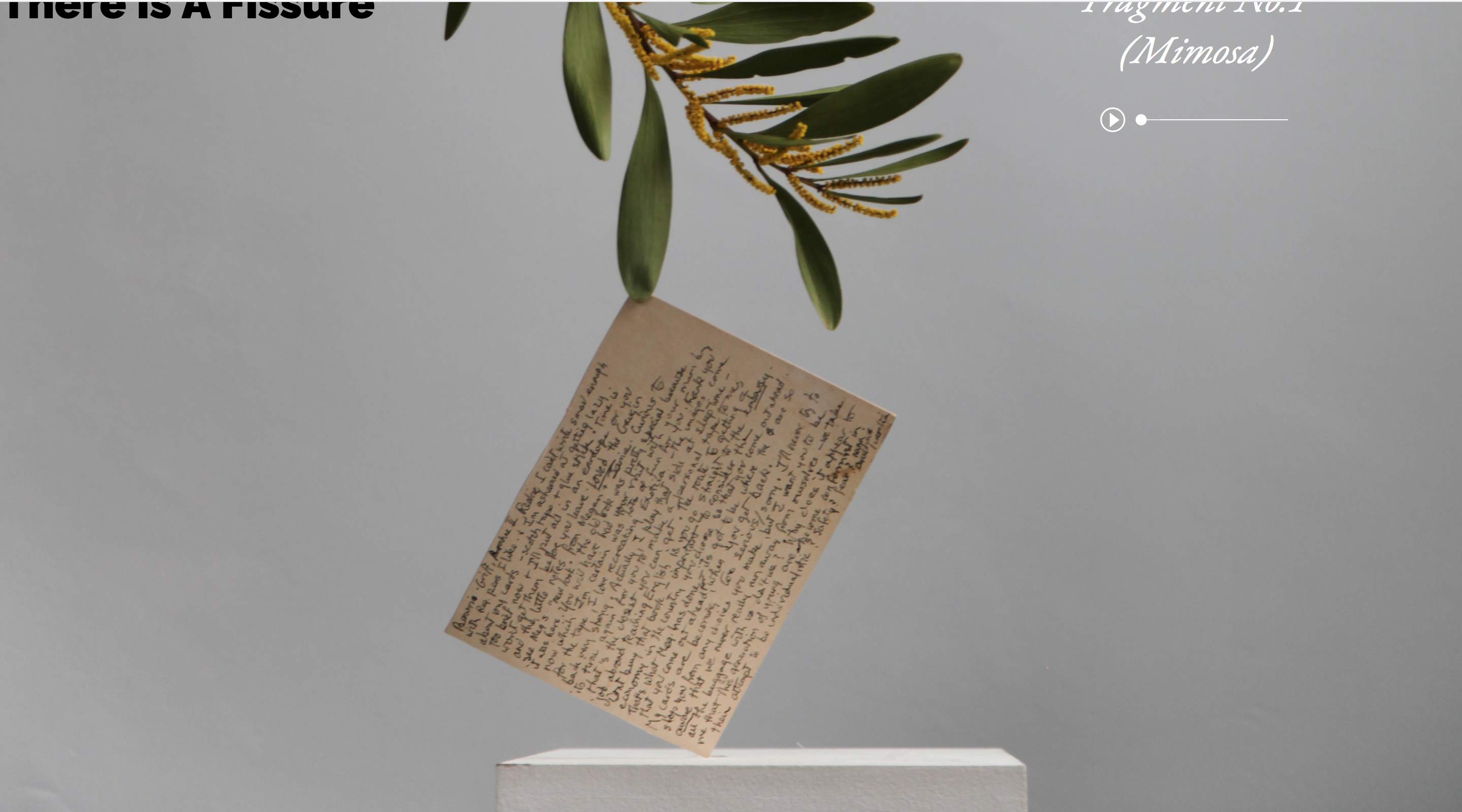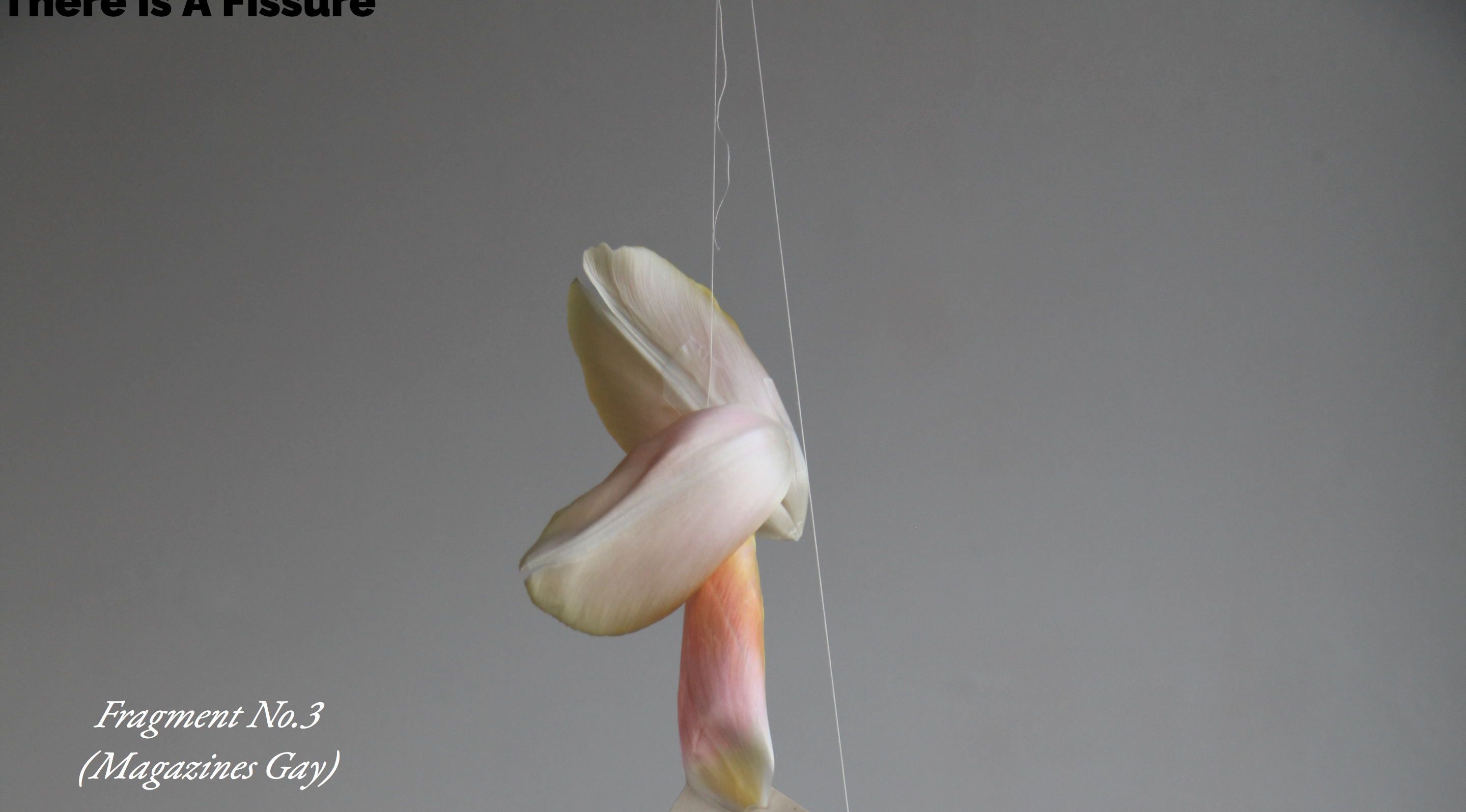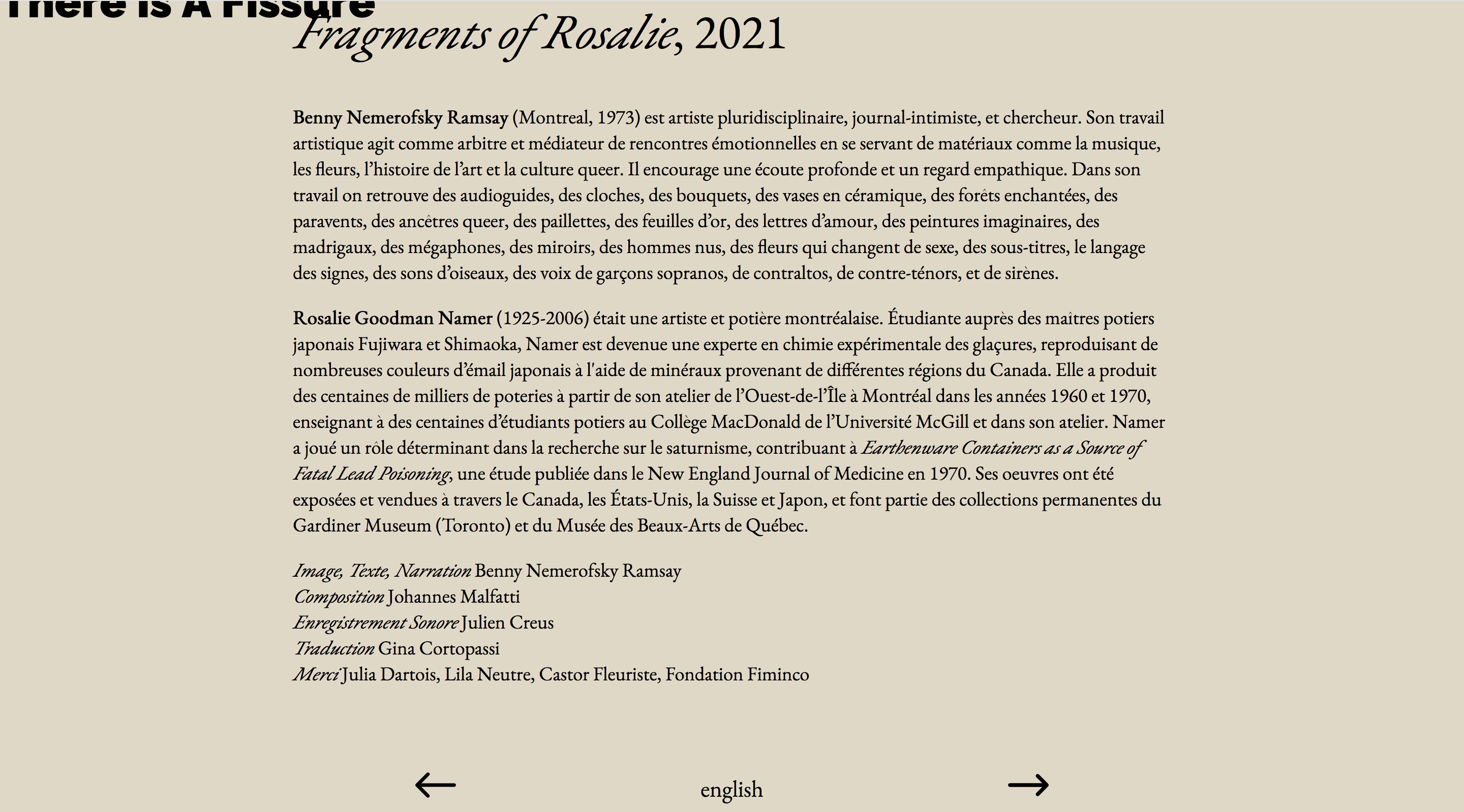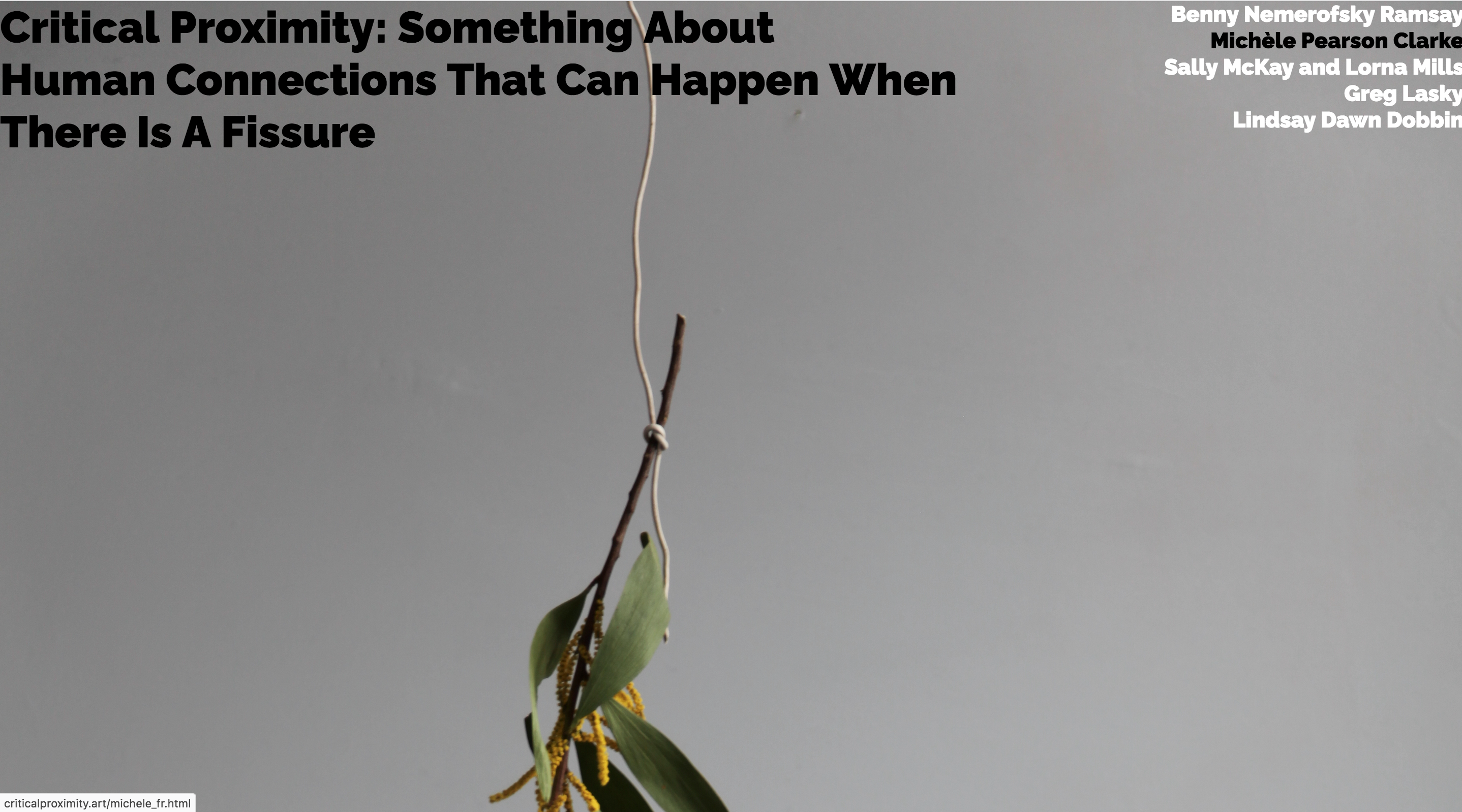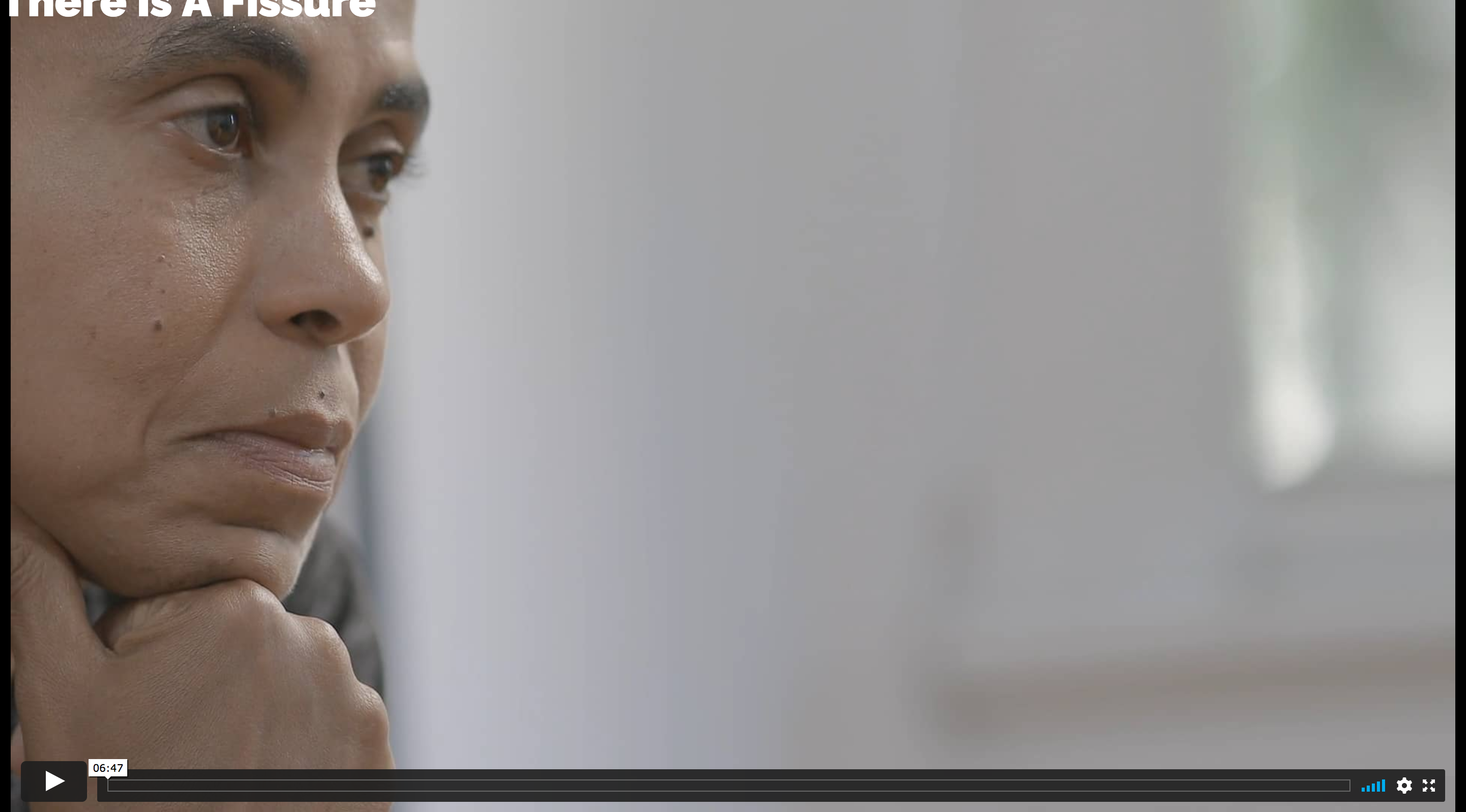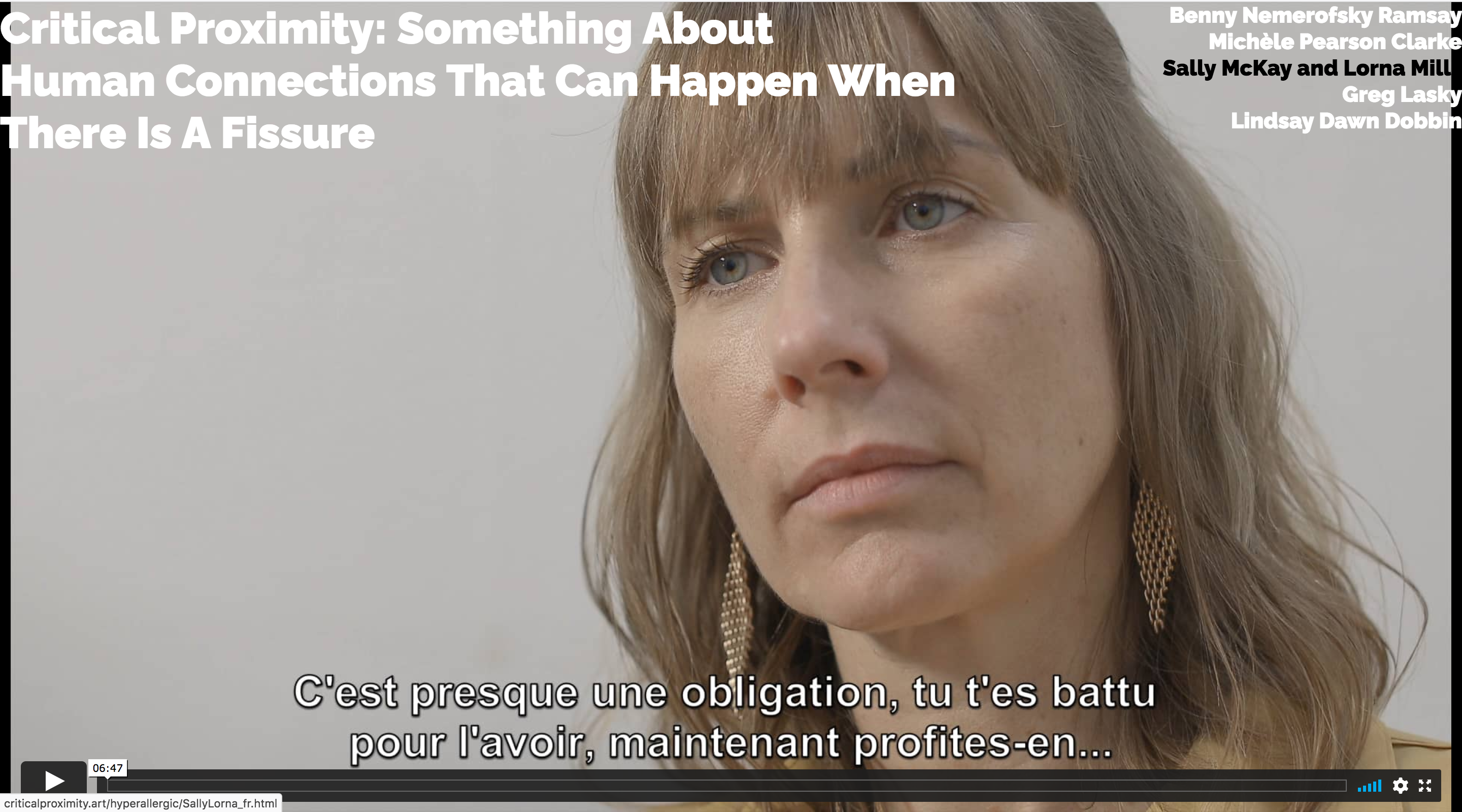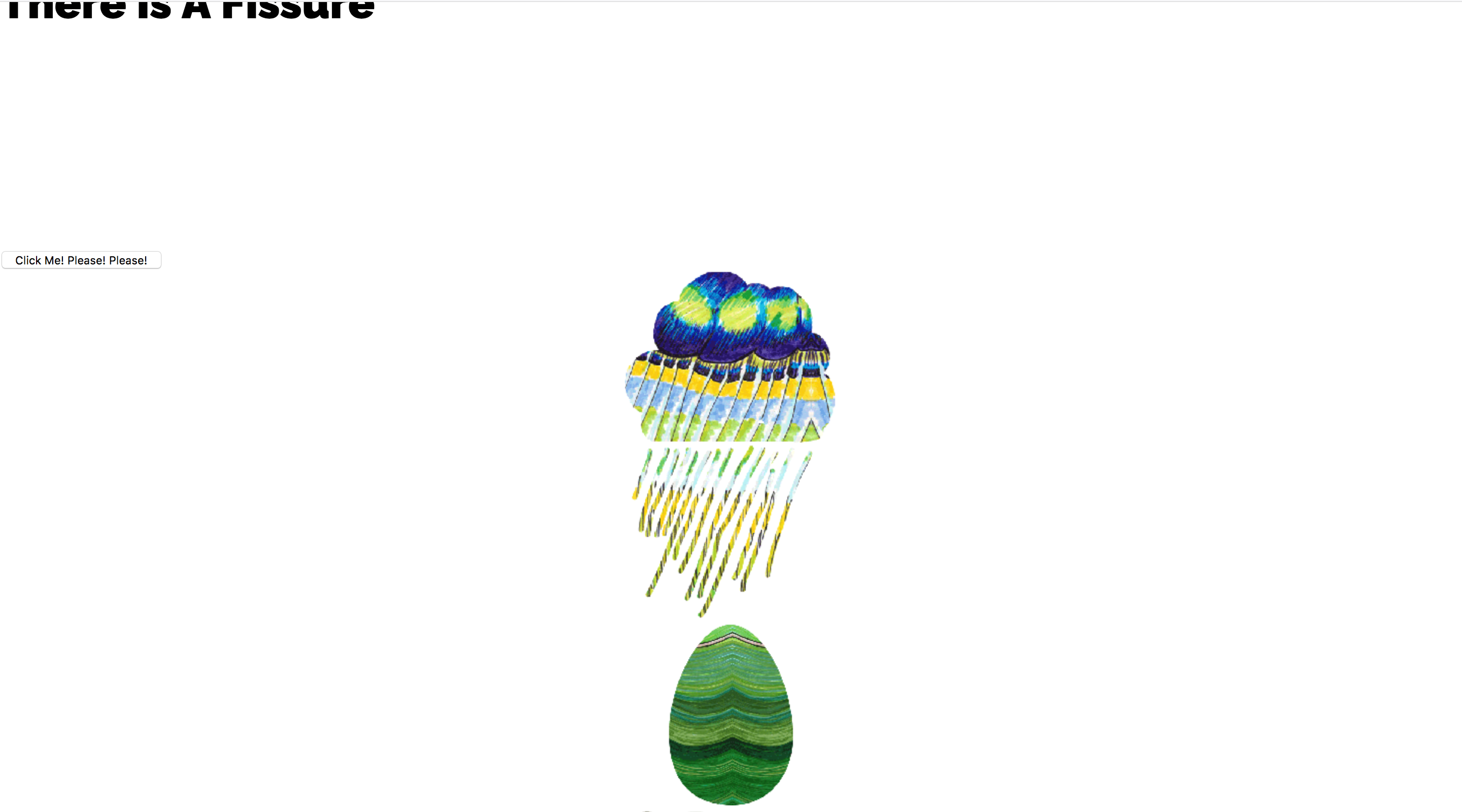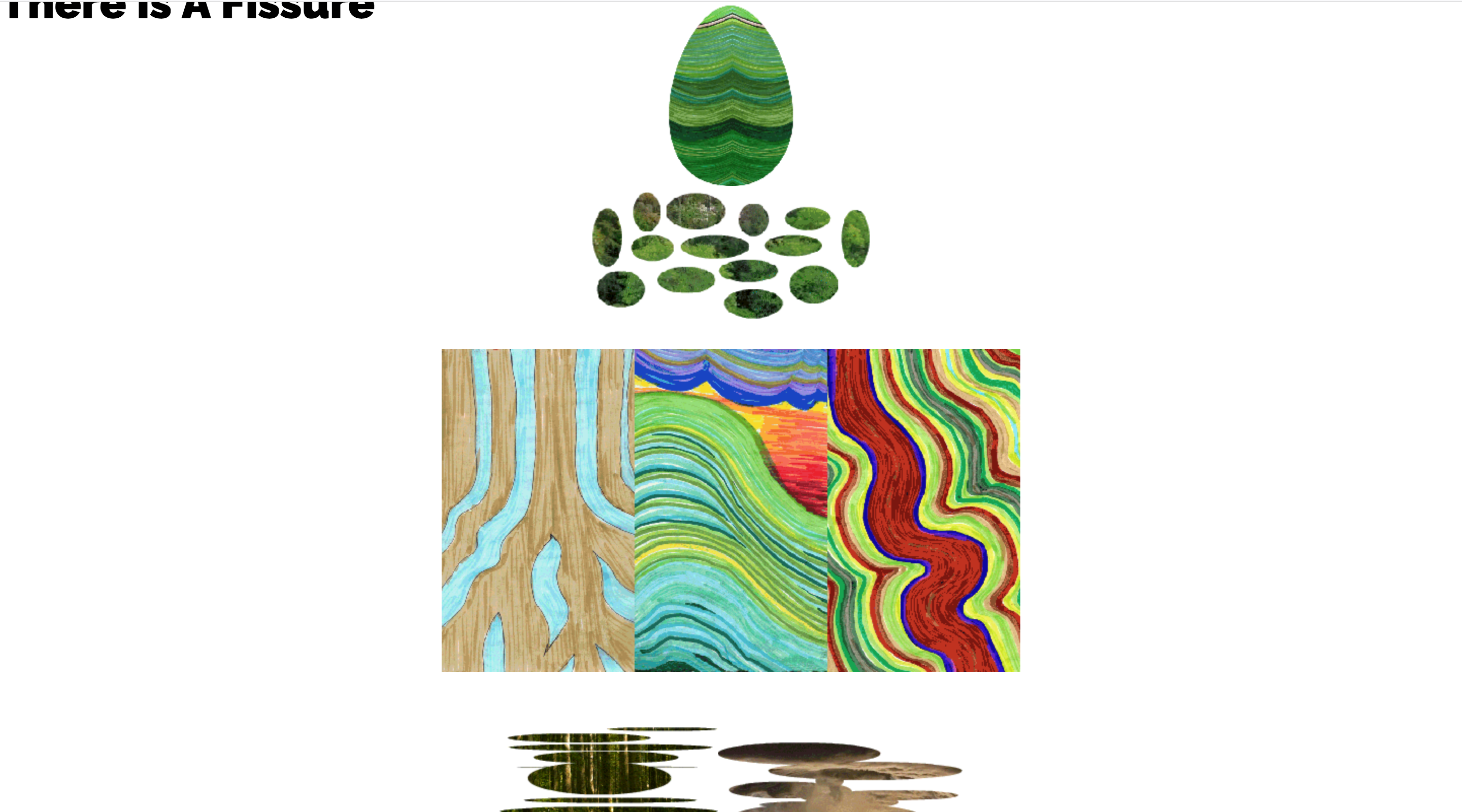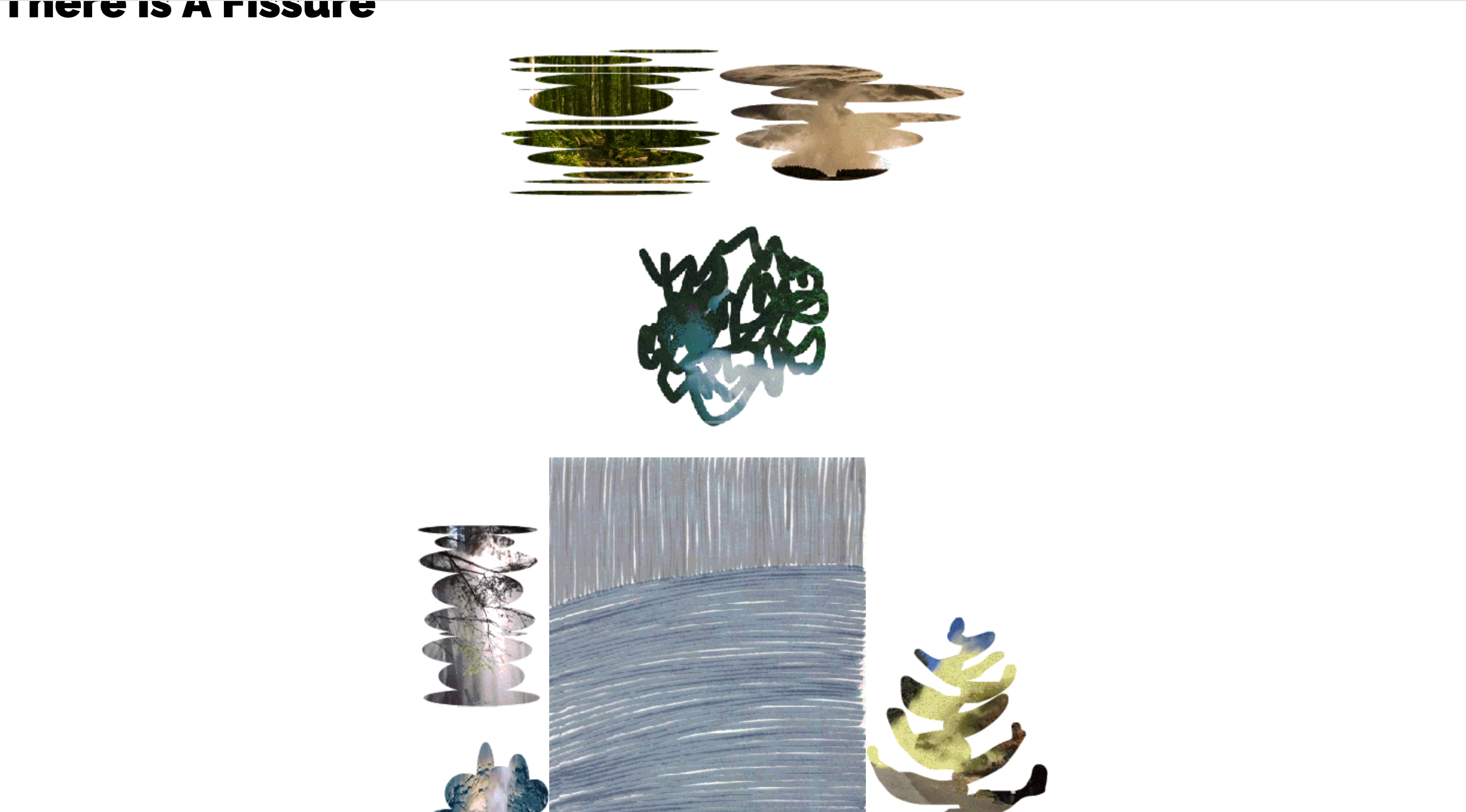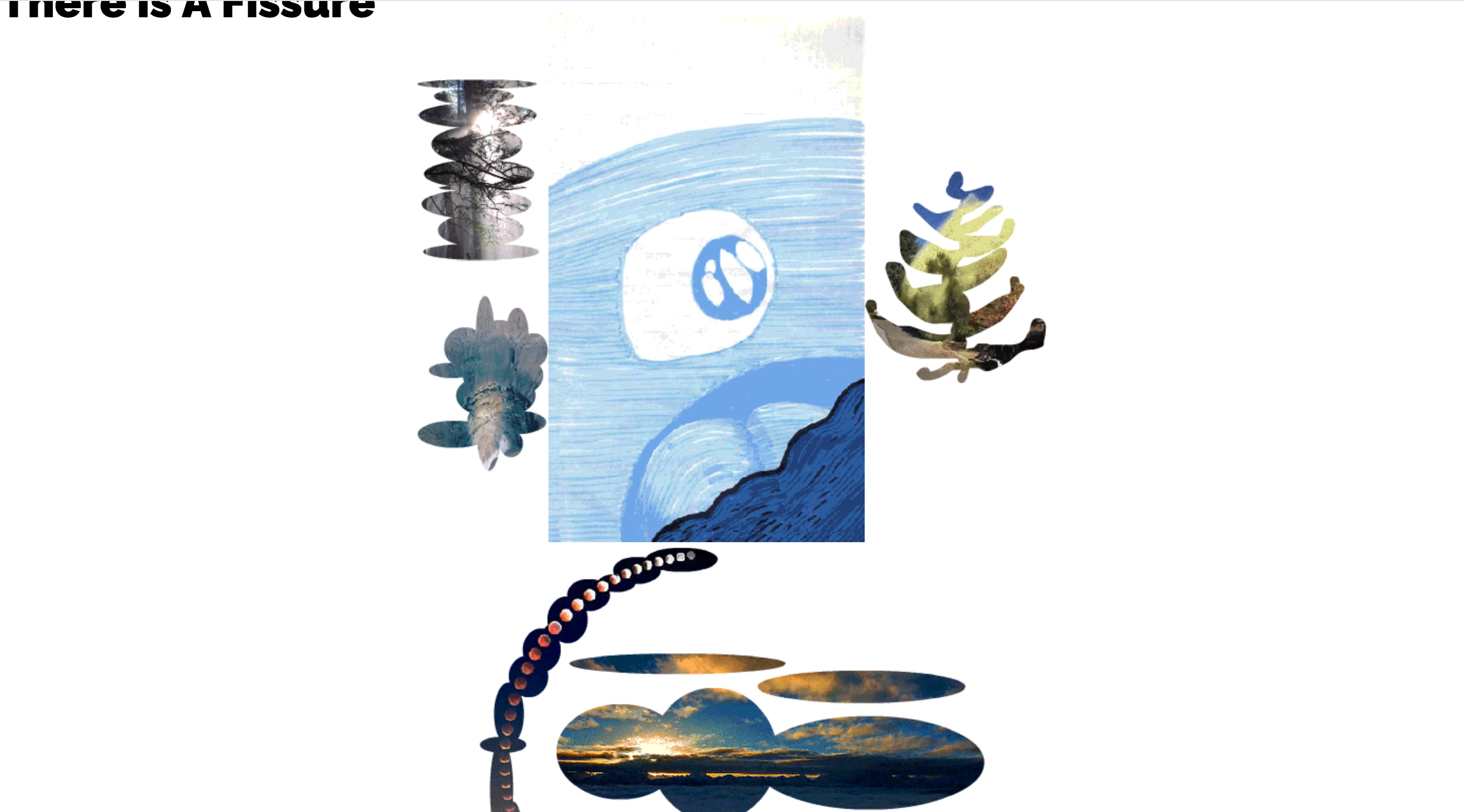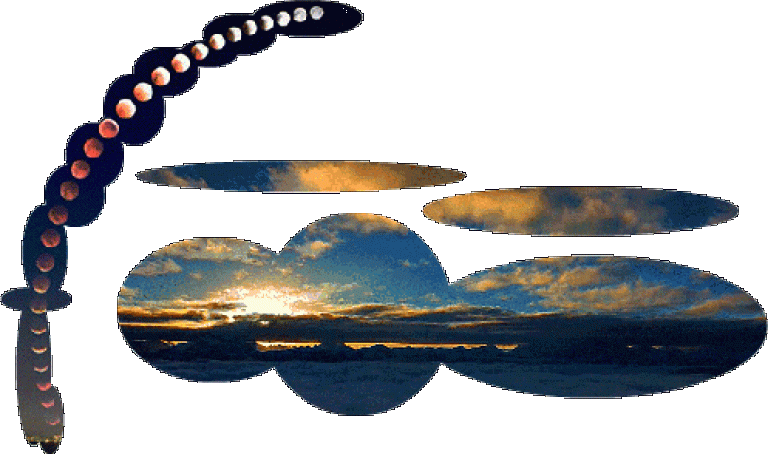I don’t share personal things online; here is something I am sharing. This exhibition is the result of an invitation to curate an online show for OBORO. The show reflects on what has happened since the World Health Organization declared the COVID-19 outbreak a pandemic (March 11, 2020). One of my main concerns about curating an online show during this time was dealing with quarantine fatigue. For those of us working remotely—likely the audience of this show—online work and interaction are not a choice. When we have the choice, we disengage. As such, I decided to curate a show that was personal. The works selected engage with feelings I have experienced because of isolation, reduced physical activity, and the hopeless sense of “I cannots” in my daily activities (Sara Ahmed’s “I cannots”). Fissure is the common theme. With the pandemic, all sorts of things fractured or broke, including personal relations and a sense of control over our lives.
This show is personal too because it relates to my emotional connection to the work of Lindsay Dawn Dobbin, Greg Lasky, Sally McKay and Lorna Mills, Benny Nemerofsky Ramsay, and Michèle Pearson Clarke. The selected artworks deal with intimacy and forms of rupture. Some works directly engage broken objects or relationships (Benny Nemerofsky Ramsay’s Fragments of Rosalie and Michèle Pearson Clarke’s Handmade Mountain). One is inspired by pandemic grief (Sally McKay and Lorna Mills’ Boost Presume I’m Gonna Breathe Grieved). One conveys difficult emotions made common in the pandemic (Greg Lasky’s Untitled). Still another evokes the mental space opened after a storm, when we reach a new state and accept what is—ahead and around us (Lindsay Dawn Dobbin’s Arrival).
For the last decade, I’ve thought productive things happen in a fissure, when our connections and relationships don’t work, when we can’t connect, and when our connection with other people results in a shortcut. Oppressive structures affect us profoundly and personally. In my PhD dissertation I formulated “critical proximity” as productive moments of disconnection that have at their basis a closeness (2017). Some pieces invite spectators to physically get close to the works and interact with them. Others involve tactile contact. And still others explore metaphorical forms of closeness or distance between spectators and the work (or people represented in the work). Critical proximity is critical because it incites reflection on the interaction between the spectators and the artwork; proximity because its structure and aesthetics are felt closely, to erode the sense of distance and detachment between the self and Other. Set in opposition to the ideal of “critical distance” in Art History, critical proximity is a reflective means to defy ethics centered around the first-person and a detached view on technologies. In this exhibition, I revisit critical proximity to engage with our closeness to objects and subjects through artworks that incite difficult emotions such as sadness, grief, anxiety, and fear in the pandemic. This selection of contemporary artworks is a personal invitation to share intimate objects, feelings and experiences, to reflect on what has happened and what is yet to happen.
- Erandy Vergara-Vargas

